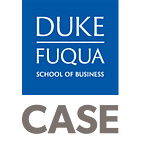Determine Your Level of Control: Centralized or Decentralize?
How should the locus of control within your organization evolve to empower your talent to drive sustainable impact at scale?
As social enterprises scale their impact, they often evolve through stages of being more centralized (to more tightly control programming and allow for testing, maintain quality and more) versus decentralized (to push down decision-making and allow for local adaption). Finding the right balance is challenging but critical to empower the talent you have brought together.
Advice from the Field:
1. Evolve and experiment to find the right balance of control.
The story of Teach For America (TFA) illustrates the challenge of finding the right balance of control. TFA CEO Elisa Villanueva Beard described TFA’s scaling journey as evolving through several phases:
- Starting “scrappy” to test and prove their model;
- Becoming more centrally-controlled during its rapid expansion to control program quality and roll-out;
- Realizing, at a certain stage of growth, that a more decentralized approach was needed to allow for region- specific adaptation of the core model by local leaders; and
- Refining the role of the central office to coordinate and support those local leaders.
Decentralizing is also the strategy that Harambee has found works for its scaling success. In the words of CEO Iskander, “You cannot scale up if it is all about control. You need individual cells roving to solve customer needs; without that you can’t scale quickly and effectively enough.”
Alternately, Root Capital shifted to a more centralized model in 2016, evolving from a diffuse structure where decisions were often made by committee — which had led to a lack of accountability given the many decision-making bodies. In this strategic pivot, Root Capital made roles more defined, created more C-suite positions, and shifted to what it called a more traditional structure with decision-making at the top. The organization was careful to work to retain the important value of giving everyone in the organization a voice but had to accept the fact that not everyone will agree on any one decision; the shift was meant to increase accountability and clarify direction coming out of Root Capital’s pivot.
Additional Resource: 5 Stages of Evolution and Revolution
The examples depicted above reflect many of the same stages seen in the corporate world. In his classic HBR article, Larry Greiner outlines the five stages of evolution and revolution that organizations often experience. Evolutions include shifts through the following:1. Creativity: lean team of doers, informal communications, proving model
2. Direction: more central control and hierarchy to drive growth
3. Decentralization: more local control and adaptation
4. Coordination: more functional units and central HQ executive team functions
5. Collaboration: matrixed, team-based, HQ consults (not directs) the team
2. Clarify the role of the central office.
Alongside this evolution between central and local control, the role of HQ can change as organizations scale their impact. Interviewees advised that enterprises should clarify the specific functions that the central office is uniquely suited to deliver. This often means more cross-cutting functions that require an organization-wide view and serving in more of an advisory role to support the rest of team (both internal staff and external partners). In the case of Teach For America, the central team conducts functions that are more cost-effective when run from the center or that support increased knowledge-sharing across regions, in addition to common functions such as finance, technology, recruitment and admissions, and brand management. As part of that evolution, TFA ensured that it clearly outlined the boundaries for local adaptation so that the role of the center and the autonomy of the regional offices was clear to all. Similarly, Foundation for Ecological Security pushed down responsibility to heads of regional offices and evolved the central office to become “ambassadors, innovators, and troubleshooters,” having higher- level responsibility for verticals and supporting the regions in implementation.
Do’s and Don’ts of Determining your Level of Control: Centralized or Decentralized
Read next: Evolve Your Governance/Board Structure and Roles, or return to see all articles in People Power.
This article was written by Erin Worsham, Kimberly Langsam, and Ellen Martin, and released in July 2019.
